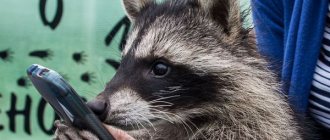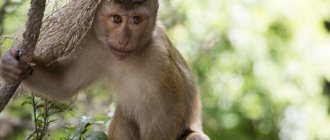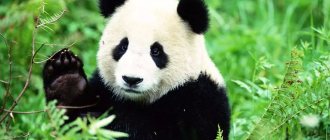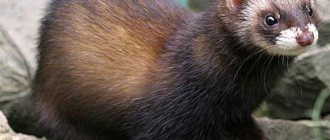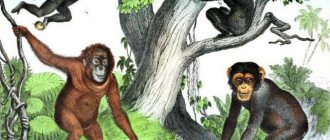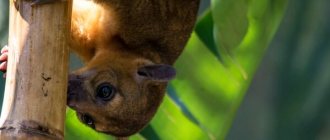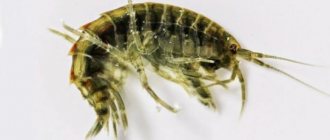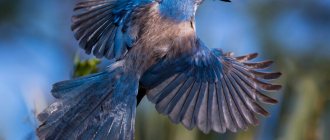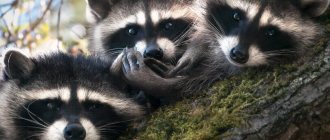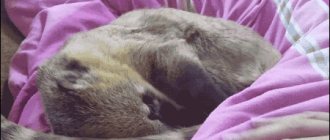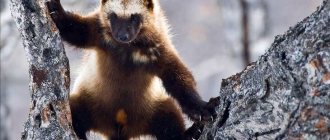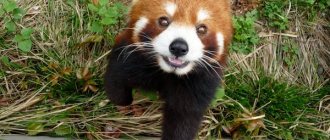- Wild animals
- >>
- Mammals
Nosuha is a small, cute mammal. They were so nicknamed for their very mobile nose, which reflects the main emotions of the animal. The scientific name of the animal is coati, which means “Nose” in Indian. Since people increasingly began to have exotic animals in their homes, the nose is also a pet of many families, its behavior has been studied both in the wild and at home.
Origin of the species and description
Photo: Nosukha
Nosuha belongs to the raccoon family of the order of predators, has much in common with them, but there are also differences in both appearance and behavioral characteristics. Previously, they were compared to badgers and foxes, in appearance, type of nutrition or behavior, but this animal turned out to be really closer to raccoons, especially in character and body structure.
There are three types of noses in total:
- Ordinary nose;
- Coati;
- Mountain nose.
They differ in color and slightly in body shape, and are also more common on different continents. Scientists from time to time divide animal species into subspecies based on one or another characteristic; for example, at the beginning of the 21st century, thirteen subspecies of the common moth have already been identified. Many individuals have distinct character and lifestyle traits, which supports the division into subspecies. However, this is still a controversial issue and the number of subspecies may change.
These animals are social and their behavior is very interesting to observe. When communicating with each other, they use a large number of sounds, they have active facial expressions, in particular due to the nose, and they also form groups among their closest relatives. Nosuhs have been domesticated, and it is becoming increasingly popular to keep these animals in homes.
Raccoon family: camomicili
The closest relative of the striped raccoon is kakimicili. The unusual animal looks like a marten, but with a cat's body. The weight of the camomicili does not exceed 1.3 kg, and the tail is striped, like that of the minnows, only much longer. The homeland of these animals, like raccoons, is the USA. Surprisingly, kakimicili are widely known animals, but little studied.
Interesting: camomicils make sounds similar to coughing and high-pitched screeching.
Despite their cute appearance, kakimicili, like raccoons, are very cunning animals. Lifestyle is nocturnal and solitary. When the kakimicili gets scared, it arches its tail over its body in order to visually increase in size and frighten its opponent.
raccoon
Appearance and features
Photo: Nosoha animal
A medium-sized predator, the body is elongated, about 60 cm. The tail is long, from 30 to 70 cm, extended upward, and slightly curved at the very tip. The weight of an adult can reach 10 kg, but on average they weigh 6–8 kg. The legs are short, powerful, the front legs are somewhat shorter than the hind legs. The paws are miniature, with flexible ankles, strong fingers and sharp massive claws, which allows the noses to climb up and down trees and dig into the soil, turf and even tree bark in search of food. It is interesting to note that this land animal has membranes between its toes, and it turns out that they really love to swim and are very good at it.
Video: Nosukha
The muzzle is narrow, with a slightly turned up nose, proportional to the body. It was thanks to him that it got its name. The nose looks like a small proboscis, it contains many receptors inside and is equipped with a very large number of muscles, therefore it is extremely mobile and interesting. With its help, the nose expresses emotions, finds food and deftly removes it from hard-to-reach places. The ears are round, neat, small. The eyes are black, round, set quite close to the nose and directed forward.
The noses are completely uniformly covered with short, rather stiff and warm hair. The animal is dark in color: brown, gray to black. On the ventral side it is much lighter, the chest and belly are closer to yellow. There are light to white spots on the face: on the ears around the perimeter, spots around the eyes and the entire lower jaw up to the beginning of the neck. The back, outer parts of the legs and the paws themselves are the darkest areas of the body. The tail is striped, there is an alternation of light and dark shades of fur and very evenly throughout the tail from its beginning to the tip.
Where does Nosuha live?
Photo: Raccoon nose
This animal is known and widespread in America. Sometimes they can be seen near houses and garbage cans. They are not very shy and can live not only in the wild, but also easily come into contact with humans. Different species of nosoha live in different areas of America. The common nosoha is an inhabitant of South America; there, in the tropics, it is very common. The coati is a resident mainly of North America, and its lower part. Mountain nosoha is the rarest and lives in a very limited area, in the Andean valleys of South America, closer to the north.
They are unpretentious to their habitat; they mostly live in tropical forests, move easily and jump through trees. But a sufficient number of noses are also known in desert areas, where it would seem that the environment is completely different. However, animals have adapted to such conditions. And, for example, the mountain nosoha is a species that was named after its habitat; it is the only species that lives near the mountains.
Of course, in the valleys there is enough vegetation and soil; everything for comfortable living exists. Nosukha lives on land and can live without bodies of water. Nevertheless, she can swim and dive, and a whole group of these cute animals can also settle near bodies of water.
Raccoon family: olingo
Olingo is the smallest species of the entire raccoon family, their body weight reaches a maximum of 2 kg. Olingo has a dense but soft coat of golden color. The closest relatives are nosukhi, which also belong to the raccoon family.
Interesting: olingos have an anal scent gland to attract individuals of the opposite sex.
You will not see these animals in our latitudes. They live in the tropical rainforests of South America. Olingos prefer to live alone. Although on some especially fruitful fruit trees you can find a group of olingos that have formed something like a commune.
Interesting. Olingos avoid kinkajous because they chase them out of fruit trees.
The diet is omnivorous, but olingos prefer fruits and nectar. At the same time, they sometimes prey on insects and very small vertebrates. Olingos are poorly studied animals, so it is still not known what their life expectancy is. It is believed that no more than 10 years, although at home they live up to 25.
Interesting: Olingos only give birth to 1 baby.
Olingos have been little studied; only in 2013 it was determined that there are 4 types of olingos. Olingos are considered the rarest species of raccoons. One of the species has already disappeared from the Earth, because previously 5 species of olingo were identified.
Olingos have multifunctional and mobile fingers, which allows them to lead an arboreal, predominantly nocturnal lifestyle. The tail, although not covered with rings, serves well for maintaining balance and balance. By the way, on some olingos you can still see faint stripes on the tail.
Olingo raccoon
What does the nose eat?
Photo: Nosuha (coati)
Nosukhi are omnivores; they are unpretentious both in their habitat and in their food. An adult needs to consume 1 - 1.5 kg of food per day. When searching for food, noses rely on their acute sense of smell; with their nose, like a snout, they dig up the ground, turn over stones, sniff grass and trees. Since this is a predatory animal, first of all, noses will give preference to amphibians, frogs and lizards, eggs of reptiles and birds, scorpions, insects, larvae, rodents, mice, voles and any other small creatures. On hungry days, noses eat ants, spiders and other small things. The hunt takes place with the entire group of adults, which they adhere to. The nose first presses the victim to the ground with its paw, then inflicts a fatal bite with its small powerful jaws, then eats it piece by piece. The animal also feeds on carrion.
Nosukhi love any fruit, fresh or rotten, and are not averse to chewing on roots or young shoots of bushes. With their clawed paws, they easily peel off the bark of trees in search of beetles, flies and other insects. They are also able to dig small holes and look for anything edible in the ground. Animals have 40 teeth, some of them are very sharp, thin, some are in the form of tubercles for grinding food. This jaw arrangement is suitable for both meat and plant foods. When searching for food, the animals turn out to be very friendly: the first one to find food raises its tail up and emits a characteristic whistle. This minute the relatives will gather around the find.
Among animal lovers there are those who keep noses in their homes. Of course, it’s worth considering their daily diet. It should include meat, fish, eggs, sometimes you can give cottage cheese and cheese, they will not refuse. The simplest fruits are suitable: apples, bananas, apricots, plums, and berries. Noskhas like root vegetables to a lesser extent, but are unlikely to refuse them. It is imperative to give your pets a lot of water; it is better to ensure that the drinking bowl is constantly filled.
Raccoon family: kinkajou
Kinkajous are also called honey or flower bears, because they feed on honey, nectar and fruits. To a lesser extent, their diet includes insects, frogs, lizards and small animals.
Interesting. The kinkajou's tongue protrudes 13 cm, and with its help they perfectly extract honey from the hives.
Life expectancy is approximately 23 years. The famous kinkajou lived for 43 years! The kinkajou differs from other species of the raccoon family by its single-colored tail and the absence of the famous raccoon rings. The fur is velvety, reddish-brown.
Kinkajou has virtually no natural enemies, and people rarely see them. Honey bears prefer to be nocturnal and spend almost their entire lives in trees. They use their tail as an additional arm to jump on branches, in this they are similar to monkeys.
Interesting: the tail supports the weight of the kinkajou's body in order to hang on it when all the legs are busy eating.
They are about the size of a small cat. Despite their cute appearance, we do not recommend petting them. Kinkajou are often carriers of bacteria. Bactria cause fever, pain in the stomach and head, and even blood in the urine. But don’t be alarmed ahead of time, because the kinkajou’s habitat is South and Central America. In our latitudes they do not threaten you, because they simply are not here.
Kinkajous survive well in captivity and can easily be kept as pets. But as capricious as a striper, which can both scratch and bite.
Interesting: While raccoons harm corn plantations, kinkajou often attack fruit plantations.
raccoon kinkajou (honey bear)
Features of character and lifestyle
Photo: Mammal nosuha
Nosos prefer to lead an active lifestyle during the daytime, and at night they climb a tree or other secluded place to sleep. But this is not categorical, they can hunt at night, it all depends on their needs. The noses move slowly, stepping softly like cats. As soon as they sense danger, their tail jerks up sharply, they make barking sounds, and rush away, reaching speeds of up to 30 km/h.
Near trees, noses feel much more confident. They climb trees very deftly and quickly, where they hide from their ground-based enemies. It is curious that noses have a wide variety of sounds that they make when communicating. Some scientists rank them among the most intellectually developed animals for their variety of facial expressions, talkativeness and care for their relatives. Indeed, females are ready to take care of other people’s cubs in the event of the death of their own mother. They are even compared to primates, observing their complex communication in a flock with each other.
Nosids do not like heat; in bright open sun they prefer to be in the shade of trees. In such cases, they are more active in the evening, at dusk. Adult individuals are responsible for food, they mainly hunt all day long, and grown-up cubs play with each other and are just learning to get their own food, starting with fruits and small insects. The lifespan of the nose is approximately 8 - 10 years in the wild and up to 18 years in captivity have been recorded.
Raccoon family: aguara
Raccoons are crustacean eaters, also known as aguaras. They live in the swamps and jungles of South America. Moreover, they are found in a wide variety of habitats, from semi-desert regions to the Amazon tropics. Based on the name, you already guessed that these raccoons prefer to eat crustaceans. Although this is not the only element of their diet, because they are omnivores. But most of all, these raccoons love crabs, lobsters and shrimp.
Interesting: in northern Costa Rica and Panama, the habitats of minnows and crustaceans overlap.
Crayfish are visually similar to their northern relatives - stripers. But crustaceans are smaller in size and their body is more streamlined due to the lack of warm undercoat. Crayfish are considered short-haired raccoons. The weight of crustaceans reaches 12 kg. The color is more brown or sandy, unlike stripers with their silvery gray. The famous mask on the muzzles is smaller than those of the northern brothers.
Crayfish eaters lead a solitary nocturnal life and do not form communities, like stripers. During the mating period, the male finds several females, does his job and leaves. Then in the summer the babies appear and are raised only by their mother.
Interesting. Male crustaceans are tolerant of other male crustaceans. Sometimes their territories even overlap. Males compete with each other only during the period when they need to find a lady for their offspring.
Crayfish use 13 different sounds to communicate with each other, with 7 sounds used only to communicate with their mother. By the way, the garglers have the same principle of communication in the commune.
aguara raccoon (raccoon crayfish)
Social structure and reproduction
Photo: Nosukha babies
Animals live in small groups from several individuals to fifty. Females and cubs stay together, while adult males lead a solitary lifestyle and join groups before the mating season. By the way, their mating season lasts quite a long time, from October to March. During this time, males manage to join flocks of females with young animals. Often, for a flock of females, you have to fight with another male. They fight with their sharp paws and teeth. The winner becomes the leader of the pack, marks the territory with a special secretion secreted in the urine, and begins to perform a biological function.
Mating occurs after a short foreplay in the form of licking the female’s fur with the tongue. The male mates with all mature females in his troop. After the end of the mating season, the males remain for some time. Pregnancy lasts 2.5 months. At least two weeks before giving birth, the females drive out their male, and each of them retires to secluded places - tree branches are best suited, where they build nests. Usually 4 - 6 cubs are born weighing 60 - 80 grams. They are completely helpless, blind, have no fur, and need maternal care and warmth. The eyes of small noses open on the tenth day, like those of small kittens. At the age of several weeks they are already trying to escape from the nest, the female has to strictly monitor this. They begin to develop physically, learning to walk and climb trees.
Lactation in noses can last up to four months. After this, the cubs become independent, learn to hunt and play a lot. At two years old, the female's cubs become sexually mature and begin to bear offspring themselves. Males enter sexual maturity at three years of age. Females can bear offspring up to ten times during their lifetime.
Natural enemies of noses
Photo: Nosoha raccoon
Larger predators pose a danger to the nose. There are three main groups of natural enemies that live side by side with them. In open areas, in the absence of forests, they are most often hunted by birds of prey, for example, kites and hawks. Therefore, noses prefer to stay in those areas where there is some kind of shelter: trees, stones, crevices, holes.
The next no less dangerous enemies of noses are predatory cats: jaguars, ocelots, leopards. They pose a danger again on earth. Although these predators can move deftly through trees, they hunt mainly on the ground. It is almost impossible for a nose to escape from such a predator; it is inferior to them in everything: in speed, sharpness, and size. And we can separately note such dangerous inhabitants of tropical forests as snakes. Boas are very adapted to life in forests and their coloring camouflages them against the general background. Often noses fall into this trap. Having suffocated them, the boas swallow them whole and slowly digest them.
Although it has claws and sharp teeth, it does not use them for defense against predators; it is too small. Nevertheless, an interesting fact is that noses are able to run for quite a long time from approaching danger; according to some reports, they can not slow down for up to three hours in a row.
